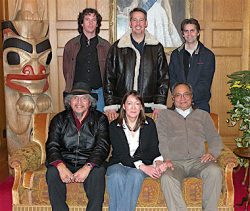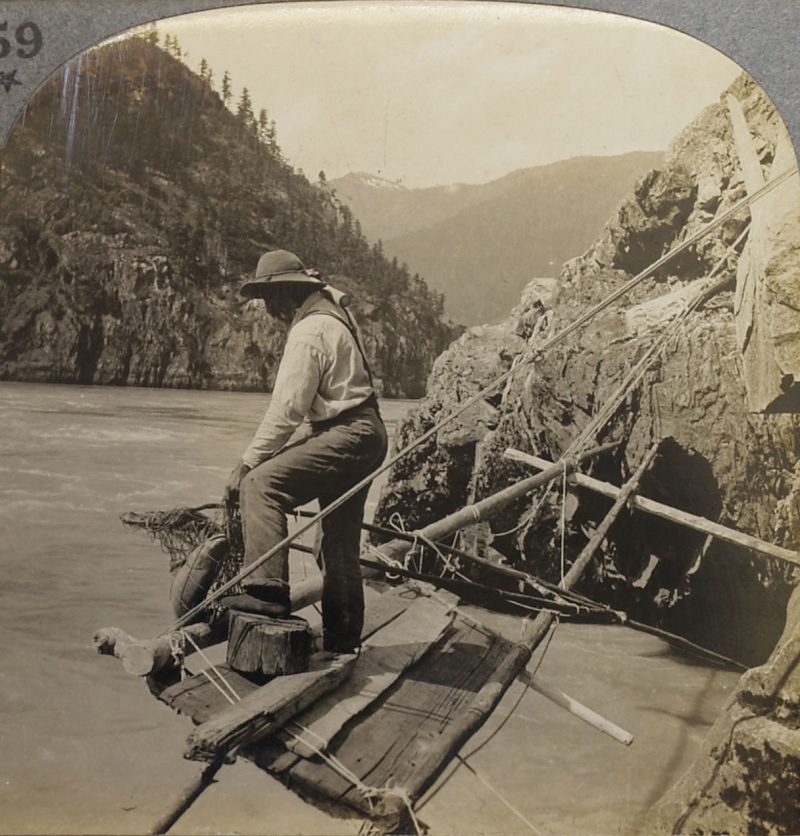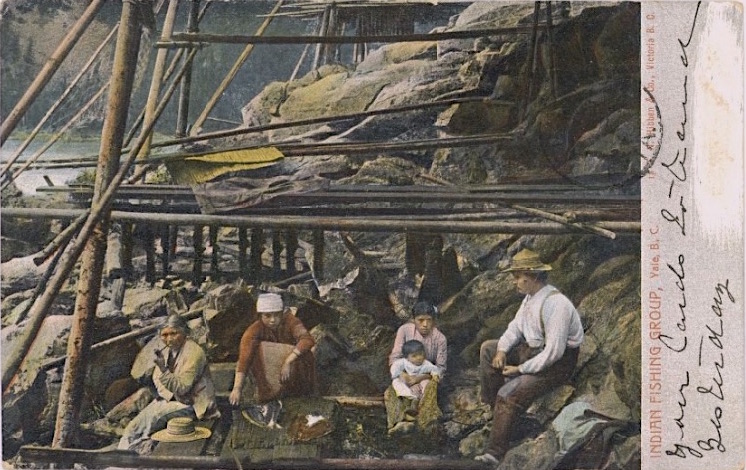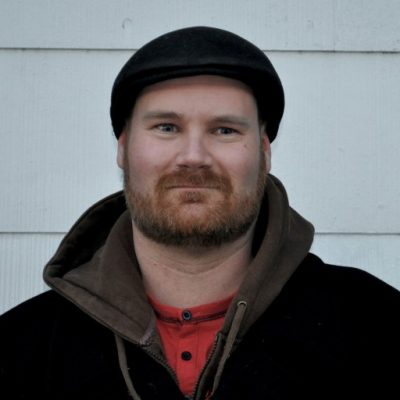#506 Scribes of the Stó:lō Nation
Towards a New Ethnohistory: Community-Engaged Scholarship among the People of the River
by Keith Thor Carlson, John Sutton Lutz, David Schaepe, and Albert “Sonny” McHalsie (Naxaxalhts’i) (editors)
Winnipeg: University of Manitoba Press, 2018
$27.95 / 9780887558177
Reviewed by Tyler McCreary
*
 Towards a New Ethnohistory, a new collection edited by Keith Carlson, John Lutz, David Schaepe, and Sonny McHalsie (Naxaxalhts’i), presents a series of studies conducted by former students of the Stó:lō Ethnohistory Field School. While the papers each individually contribute to expanding the catalogue of research on Stó:lō ethnohistory, the collection is most significant as a model for community-engaged scholarship. Through the volume, the encounter with colonialism positioned within Stó:lō history, rather than the normative positioning of the Stó:lō within settler colonial history. The capacity of student-researchers to reposition history within the community context relied upon the unique organization of the Stó:lō Ethnohistory Field School, the only program of its kind operating at the graduate-level.
Towards a New Ethnohistory, a new collection edited by Keith Carlson, John Lutz, David Schaepe, and Sonny McHalsie (Naxaxalhts’i), presents a series of studies conducted by former students of the Stó:lō Ethnohistory Field School. While the papers each individually contribute to expanding the catalogue of research on Stó:lō ethnohistory, the collection is most significant as a model for community-engaged scholarship. Through the volume, the encounter with colonialism positioned within Stó:lō history, rather than the normative positioning of the Stó:lō within settler colonial history. The capacity of student-researchers to reposition history within the community context relied upon the unique organization of the Stó:lō Ethnohistory Field School, the only program of its kind operating at the graduate-level.
The Stó:lō Ethnohistory Field School began in 1997 as a collaboration between research staff at the Stó:lō Nation office and the History Department at the University of Victoria. Carlson, a member of the Stó:lō Nation staff at the time, had obtained support from Stó:lō leadership to initiate a field research school. Setting up the field school, he worked with his colleagues, Schaepe and McHalsie, to construct a list of potential ethnohistorical research topics based on conversations with community members about research that could be of use and interest.

Lutz, a faculty member in history at the University of Victoria, brought a group of students to live in and research the Stó:lō community. The university also provided funding so Carlson could be released from his regular duties and serve as co-instructor of the course. After Carlson subsequently relocated to the History Department at the University of Saskatchewan, he continued to run the field school in coordination with Lutz, as well as Schaepe and McHalsie at Stó:lō Nation.
The basic structure of the school has remained relatively consistent. Students come for four weeks, living in the Stó:lō community. The first week students attend an ethnohistory seminar and define the scope of their research projects. In the following weeks, they conduct their research. Through the school, faculty encourage students to adopt a reflexive approach in their research and engage community members in the interpretation of findings.

Recognizing Stó:lō protocols, at the close of the field school, the field school faculty host a community feast (potlatch) where they publicly acknowledge the assistance of community members, providing them with gifts. Pedagogically, the field school immerses students in the Stó:lō community and exposes them to Stó:lō ways of maintaining relationships. The long-term success of the program relies on the ongoing relationship between the university faculty and the Stó:lō community.
The bulk of Towards a New Ethnohistory features research by former students at the field school. This research spans a remarkable breadth of topics, but shares a number of salient features, reflective of the Carlson and Lutz’s approach to the interpretation of history. First, they approach the study of history as a practice that is embedded in particular community contexts. Thus, constructing Stó:lō ethnohistory requires attention to the particular ways that Stó:lō organize knowledge and memory, and an appreciation for the ways that Stó:lō historical understanding of their history has changed over time. Second, the research defies romantic simplifications of Stó:lō identities, highlighting underappreciated historical complexities.

Third, the research displayed in Towards a New Ethnohistory demonstrates the importance of attending to both processes of change and enduring lines of continuity in Stó:lō history. While an understanding of Stó:lō history thus needs to positioned in relation to the history of colonialism, Stó:lō responses to colonialism need to interpreted within a cultural lineage that preceded settlement and continues in spite of colonial depredations. Finally, fourth, there is a deep appreciation throughout for the importance of geography to ethnohistory, as the meaning of Stó:lō identity is shaped by the negotiation of relationships with culturally significant places.
The book opens with a series of studies of the Stó:lō historical consciousness of their relationship to the landscape and particular places of significance within it. Adar Charlton examines how Stó:lō stories about Xexá:ls or transformers depict a world of kinship relations and obligations that extend beyond the human community to respect ancestors in the form of trees, animals, and landscape features.

Amanda Fehr unpacks the multiple and shifting ways that Stó:lō community members understood I:yem, a particular site of significance in the Fraser Valley. As she notes, the particular register through which different people interpreted I:yem changed over time. It was understood as a salmon fishing and processing site, part of the geography of the Indigenous rights movement, a site of ecological disturbance, and a graveyard populated by spirits.
Katya MacDonald also explores the Fraser Canyon landscape, particularly focusing on the community dynamics that mediate canyon access. This includes understanding the community protocols involved in using a site, holding the political knowledge to understand how to negotiate government restrictions, and physically demonstrating use of the site.

The following four chapters shift the focus to how Stó:lō orient to ideas of ancestry and tradition. Anastasia Tataryn explores the changing roles of hereditary names in Stó:lō society as a manifestation of connections to both ancestral and future generations that reinforce a sense of accountability to community. In a more explicitly policy-oriented contribution, Kathryn McKay discusses the historical treatment of ancestral remains in Stó:lō society and how that can inform contemporary cultural heritage policies. Lesley Wiebe examines contemporary Stó:lō discourse around traditional foods, highlighting that community members talk less about the delineation between indigenous and introduced foods, than about the distinction between healthy local foods and highly-processed store-bought imports.
Shifting to the practice of Stó:lō historical research, Ella Bedard unpacks the history of the Skulkayn/Stalo Heritage Project, one of the first Indigenous cultural heritage research projects funded in 1971, and its linkages to movements to claim Indigenous rights and authority over knowledge of what it means to be Indigenous. Bedard particularly highlights the role in cultural revitalization of “middle elders,” who could speak Halq’eméylem and understood the older protocols but could also read and write in English.

The final chapters of the book further complicate Stó:lō ethnohistory, highlighting the importance to Stó:lō identity of social spaces introduced by colonialism. Christopher Marsh documents the Stó:lō history of boxing. Although “the manly art of self-defence” was introduced by agents of colonialism, Marsh highlights how Stó:lō boxers used the sport as a means to gain prestige within their community, as well as contest racist stereotypes of Indigenous people.
Similarly, Colin Osmond showcases how logging served as a means for the expression of Stó:lō masculinity. Exploring the life stories of Stó:lō loggers, Osmond stresses how logging provided opportunities for young Stó:lō men to come of age, support their families, demonstrate their skill, and build interracial friendships in the woods. Finally, Noah Miller reinterprets the history of Indian tuberculosis hospitals as not simply sites of colonial oppression but also part of the geography of Stó:lō lives, places where people went to recover, experienced care, and built friendships and alliances with other Indigenous patients.

Ultimately, the strength of the collection is its appreciation for and attention to interpreting history with reference to Stó:lō interpretative frames. The diverse collection complicates often over-simplified depictions of Indigenous subjugation to colonial power. Moreover, the coherency of this analysis and the ability of students to engage in community-based research project with three weeks of investigation time clearly is testament to the strength of Carlson and Lutz’s connection to the community.
However, the student-authors of the individual chapters repeatedly flagged the limitations of their short research stints. The text effectively documents the best research possible within the context of an intensive four-week field school; however, as a comprehensive examination of Stó:lō ethnohistory developed through community-engaged research, there are some glaring gaps. Despite the emphasis throughout the book on the need for Indigenous people to participate meaningfully in the analysis of the research findings, individual authors regularly noted that their conclusions were limited by their lack of understanding of the community context. Occasionally students noted that McHalsie had provided feedback, but none of the students discussed a systematic community review process.
Given this limitation, it is also notable that none of the body chapters was written by an Indigenous researcher, although McHalsie (Stó:lō) and Adam Gaudry (Métis), respectively, provide a preface and afterword to the book. As the book is framed as community-engaged research, it would have been interesting to learn more about how the students specifically engaged the community, particularly in the interpretative phase of their work.

Nevertheless, Towards a New Ethnohistory is a fascinating read as an example of what students can write within the context of a short field school. Indeed, given the limited duration of the field research, it is impressive to see the contributions that student-scholars were able to make. Despite the ranging research foci, the ethnohistorical research framework is remarkably consistent.
Two elements of the research strike me as particularly important components to the production of quality short studies. The first component is the community-engaged process through which research questions are developed. The second is the strong relationships of trust established through Carlson and Lutz’s decades of experience working with the Stó:lō. Facilitating student engagement with this community in Towards a New Ethnohistory showcases how researchers can effectively approach long-term community-engaged research and integrate it with student learning.
*

A native of Smithers, with BA and MA degrees from the University of Saskatchewan and a Ph.D. in human geography from York University (2014), Tyler McCreary is an assistant professor in the Department of Geography at Florida State University. In between he taught the historical geography of Canada at UBC. His research examines how Indigenous-settler relations configure the politics of land, labour, and community life. His research has analyzed themes such as how environmental governance processes address Indigenous relationships to the land; how Indigenous peoples interact with resource sector labour markets; and how processes of urban and regional governance impact Indigenous families living in towns and cities. His book Shared Histories: Witsuwit’en-Settler Relations in Smithers, British Columbia, 1913-1973 (Smithers: Creekstone Press, 2018), was reviewed in The Ormsby Review #440 (December 5, 2018) by Keith Smith.
*
The Ormsby Review. More Books. More Reviews. More Often.
Editor/Designer/Writer: Richard Mackie
Publisher/Writer: Alan Twigg
The Ormsby Review is a journal service for serious coverage of B.C. books and authors, hosted by Simon Fraser University. The Advisory Board consists of Jean Barman, Robin Fisher, Cole Harris, Wade Davis, Hugh Johnston, Patricia Roy, David Stouck, and Graeme Wynn. Scholarly Patron: SFU Graduate Liberal Studies. Honorary Patron: Yosef Wosk. As of September, 2018, Provincial Government Patron: Creative BC
“Only connect.” – E.M. Forster
